Premium Only Content
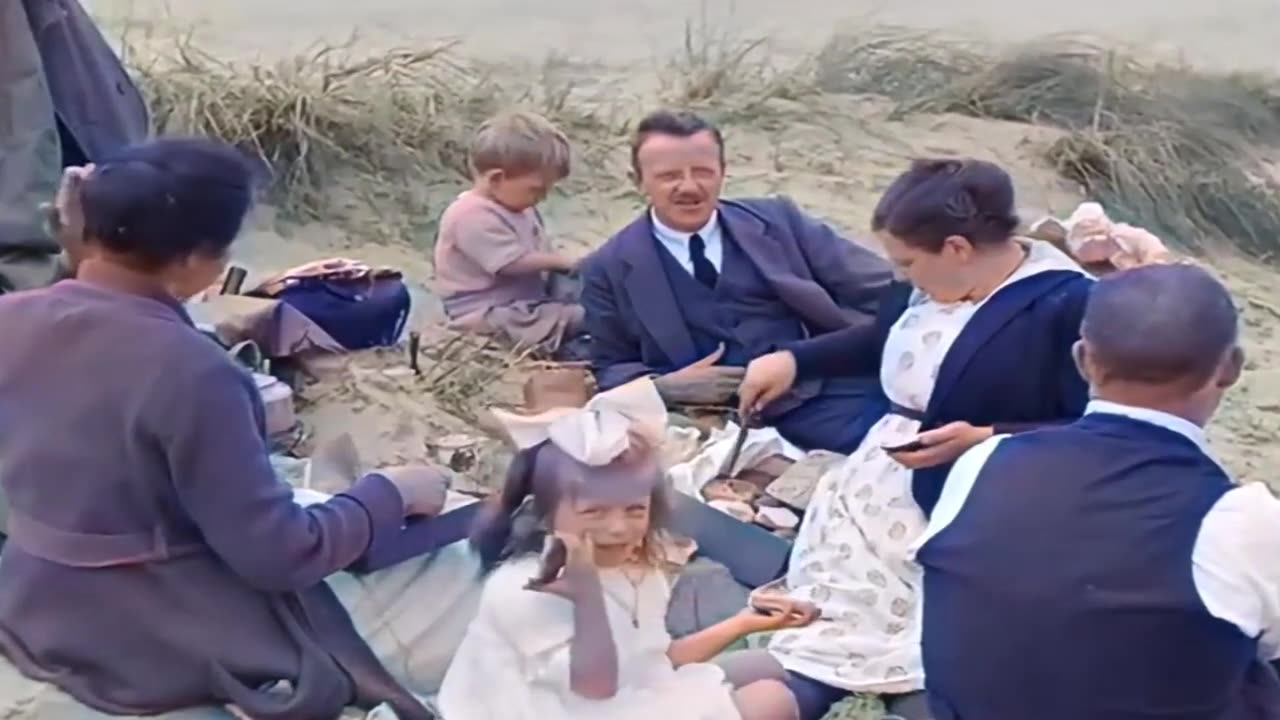
Time Of The Season She's Not There The Zombies
Time Of The Season is built around the bassline heard in the intro, this song has some very effective and unusual structural components that helped it endure. The bass riff is punctuated with a hand clap and the breathy "ahhhh" vocal. These elements add sonic texture during the verses, and also show up in the two interludes.
And while most hit songs pound you with the chorus, this one doesn't. The full chorus - "It's the time of the season for loving..." takes just eight seconds and is repeated three times. That's just 24 seconds of chorus, but this minimalist approach gave the line tremendous impact, resonating with listeners at a time of social and political turmoil in America.
The band broke up in late 1967, shortly after recording the album. When the album was released in April 1968, it sold poorly, stalling on the US charts at #95 and making no impact in their native UK. The "Time Of The Season" single, however, became a huge hit in America even though the group had disbanded and couldn't support it. It sold over a million copies, peaking at #3 on March 29, 1969.
With their newfound American success, band members Rod Argent, Paul Atkinson and Hugh Grundy got the band back together, minus lead singer Colin Blunstone. This reunion was short lived, and by the end of 1969 The Zombies were once again dead. Blunstone went on to have a successful solo career, including a #15 UK hit in 1972 "Say You Don't Mind," and was the guest vocalist on Dave Stewart's (not the Eurythmics Dave Stewart) 1981 UK #13 cover of "What Becomes Of The Broken Hearted." Rod Argent formed the band Argent, which had a hit with "Hold Your Head Up" in 1972.
The Zombies keyboard player Rod Argent wrote this song. He said in The Guardian February 22, 2008: "'Time of the Season' was the last thing to be written (for the album). I remember thinking it sounded very commercial. One of my favorite records was George Gershwin's 'Summertime;' we used to do a version of it when we started out. The words in the verse - 'What's your name? Who's your daddy? Is he rich like me?' - were an affectionate nod in that direction."
Argent added: "The album title's slightly high-flown, isn't it? As is the quote from The Tempest on the back. It was a very flowery time in all sorts of ways. Me and Chris (Chris White bassist and co-songwriter) shared a flat with a guy called Terry Quirk who was a very talented artist and he came up with this beautiful, florid cover that we adored. We didn't notice that the word odyssey was spelt wrongly, to our eternal embarrassment. For years I used to say, 'Oh that was intentional. It was a play on the word ode.' But I'm afraid it wasn't."
The famous lyrics, "What's your name, who's your daddy, is he rich like me?" are a nod to the Gershwin standard "Summertime," which The Zombies released on their first album. That song contains the lyrics, "Your daddy's rich and your mama's good looking."
The theme of "Seasons" was a concept on the album Odessey And Oracle. Albums were very popular in the late '60s, so artists could put songs together that meant something when played in a certain order.
In Word magazine January 2008, the vocalist Colin Blunstone was asked whether the word 'Odessey' in the album title was deliberately spelled wrong. Blunstone replied: "Rod (Argent) told this story for nearly 40 years of how it was deliberate and a play on the word 'ode,' hence 'odessey' when it should be spelled 'odyssey.' So I was astounded as anyone when he finally admitted about a year ago that it had been a simple spelling mistake. Too late to change by the time anyone noticed it. A bit embarrassing, but it's history now."
The recording of this song bought about a minor spat between keyboardist Rod Argent, who wrote the song, and the vocalist Colin Blunstone. The argument was over the phrase, "When love runs high." Blunstone struggled with the high note at the end of the line, and snapped at Argent, "If you're so good you come and sing it." Argent admitted in Mojo magazine February 2008: "It was written really quickly and we didn't rehearse it an awful lot. I was trying to change the phrasing."
Blunstone told his side in our 2015 interview. "It was written in the morning before we went into the studio in the afternoon, and I kind of struggled on the melody," he said. "Rod and I had quite a heated discussion – he being in the control room and me singing the song - and we were just doing it through my headphones. Because it had only just been written, I was struggling with the melody."
Blunstone added: "It makes me laugh, because at the same time I'm singing, 'It's the time of the season for loving,' we're really going at one another."
Rod Argent's organ sections take up about 90 seconds of this song's 3:22 running time. Most songs of the era that devoted so much of their time to organ riffs were much longer compositions like "In-A-Gadda-Da-Vida" by Iron Butterfly and "A Whiter Shade Of Pale" by Procol Harum.
This song has been sampled or interpolated on tracks by a number of artists, who sometimes use vast swaths of the song as the basis for their tracks - it's the base for the 2009 Melanie Fiona hit "Give It To Me Right" and for Eminem's 2013 track "Rhyme or Reason." Other tracks to use it include "Rolling Stone" by ScHoolboy Q and "Don't Look Back" by Miguel.
Surprisingly, this song never charted in the UK, although it is widely known there. In our 2015 interview with Rod Argent, he said: "'Time of the Season' was the #1 in most countries in the world, but it wasn't in the UK. It's been released three times in the UK, and it's never been a hit. But the extraordinary thing is that everybody knows it in the UK. We played Glastonbury this year, and we had a big audience of the young kids who went completely mad when we played 'Time of the Season.' So, it has become, strangely enough, a classic in the UK, but it's never been a hit."
"Time of the Season" was the first song picked by Al Kooper (just after leaving Blood Sweat & Tears) in his new position as staff producer in the A&R department at Columbia Records. As told in Kooper's Backstage Passes and Backstabbing Bastards, producer Clive Davis was about to sign off Columbia's options to release Odessey And Oracle. Kooper persuaded him to keep the option, and the Zombies' later success was the first feather in his cap.
Speaking of Columbia Records, their Manhattan offices (located at the CBS Building on Sixth Avenue between West 52nd and 53rd Streets) are known as the "Black Rock" after the appearance of the building. File that next to "Brill Building" in influential buildings in rock 'n' roll history.
According to Argent, he was told by Paul Weller that Odessey and Oracle is his favorite album of all time. Bassist Chris White added in the February 2008 Mojo interview: "The Foo Fighters said in a recent Rolling Stone they listen to it most mornings. Tom Petty's keyboard said to me, 'You guys don't realize how important that record's been. As far as we're concerned there's Sgt. Pepper and Odessey and Oracle."
In the UK, this was used in a commercial for Magners cider. In the US, Fidelity Investments used it.
After this song became a surprise hit in America after the band had broken up, an opportunistic promoter in Michigan put together an ersatz version of the group and sent them on tour. Since no singer could convincingly imitate Colin Blunstone, the promoter announced that Blunstone had died, but the band decided to soldier on without him. The real Blunstone was surprised to learn of his demise, and kept the clipping explaining his death as a keepsake.
This was used in the movie Awakenings with Robert DeNiro in a scene when they are driving in the car.
The Cantopop artist Samuel Hui released a cover in 1971 (in English) that proved very popular in Hong Kong. It came at a time when Western music was being introduced to the area.
This was used at the end of the 1996 Friends episode "The One With The Flashback" in a scene where Rachel fantasizes about Chandler. It was also featured in the 1994 episode "The One Where Monica Gets A Roommate."
More TV shows to use the song:
DC Legends Of Tomorrow ("Daddy Darhkest" – 2018)
Good Girls Revolt ("Pilot" - 2015)
NCIS ("So It Goes" - 2014)
Cold Case ("Revolution" - 2005)
South Park ("The Mexican Staring Frog Of Southern Sri Lanka" - 1998, "201" - 2010)
The Simpsons ("D'oh-in' in the Wind" - 1998)
Movies include:
All The Money In The World (2017)
The Conjuring (2013)
Riding The Bullet (2004)
Shanghai Knights (2003)
The Zombies, from Hertfordshire, England, recorded "She's Not There" after they won a talent contest that led to a recording session. They were all teenagers at the time.
The group signed to Decca Records, and their keyboard player, Rod Argent, wrote the song for the session. It tells the story of an alluring woman who won't be tied down to one man - the singer wants to let us know all about her, but he can only use words, since she's not there.
This song has a lot of distinct elements that made it a rock classic and landed The Zombies in the Rock And Roll Hall Of Fame in 2019. For starters, the lead instrument is Rod Argent's electric piano, which was very unusual at the time - in the UK it was the first hit song with that lead instrument. And then there's the breathy vocals of lead singer Colin Blunstone. The vocal has loads of dynamic range, as Blunstone starts softly to open the story:
Well, no one told me about her
The way she lied
And then gets increasingly agitated, punctuating the chorus:
Please don't bother trying to find her
She's not there!
The Zombies got a big break when the recording engineer for the session passed out on the floor. That's because the assistant, who took over, was Gus Dudgeon, who went on to produce Elton John's seminal albums. Before he passed out, the original engineer was surly to the group and keen to get it over with - not a great environment for a band's first recording session!
With Dudgeon at the controls, The Zombies were able to relax and do a great take of the song. It was a big moment for Dudgeon as well because it was his first session as the main recording engineer.
The session started at 7 p.m. because recording at night was very rock and roll, but the engineer went to a wedding that day showed up drunk.
"We are just going through some songs and I put some headphones on, and this engineer is screaming down in these headphones with the worst language you can possibly think of - very, very aggressive," Colin Blunstone said on the Songfacts Podcast in 2023. "It makes me laugh because having been in the business for over 60 years, in that first half an hour with this guy screaming at me, I was thinking, I don't think this music business is for me. Then we had a bit of luck and he passed out. He passed out cold on the floor. We had to carry him out of the studio, one on each arm and one on each leg. We took him up two flights of stairs and we put him in a London black taxi and waved him goodbye. We never saw him again, ever."
"She's Not There" was The Zombies' first single. Released in the UK in July 1964, it peaked at #12 in August. It fared better in America, where it was championed on the New York City powerhouse radio station WINS and climbed to #2 in December. America ended up being their stronghold. Their UK follow-up single was "Leave Me Be," rush released to capitalize on their momentum. It stiffed, but the next single, "Tell Her No," was released in the US and went to #6. A series of subsequent singles had little impact, and in 1968 they released an album of fresh material called Odessey And Oracle. It wasn't issued in America, but it flopped hard in the UK and other countries, so the group broke up.
The Zombies got newe life in 1969 when Al Kooper of Blood Sweat & Tears fame discovered the album on a trip to England and convinced CBS Records to issue it in America. They did, and the song "Time Of The Season" became a big hit. The Zombies, though, were already scattered to the winds, with Rod Argent and bass player Chris White in the band Argent and Colin Blunstone recording solo. Argent and Blunstone re-formed the group in 2004 and started releasing new material.
This song was born in bassist/vocalist Chris White's bedroom and only had one verse until Zombies producer Ken Jones heard it," said White. "We were playing in Hatfield, and Ken Jones came up to hear us. And after the gig, Rod said, 'I've got this song that we've been rehearsing' and he played it to Ken on the piano. He did the verse, and then the solo, and there was no second verse, and Ken said, 'Can't we go back to the beginning again?' So Rod had to write another verse, because it only had one originally."
On "She's Not There" Ken Jones also instigated a recurring trait of many Zombies' recordings: additional overdubs added in the mixdown to mono stage from 4-track. In this case, there were a couple of extra beats superimposed to create a distinctive drum pattern, thereby rendering the original mono single mix of "She's Not There" the only "correct" version of the song.
The song got a big boost when it was judged on the UK TV show Juke Box Jury, where a panel of musical authorities would pass judgment on a song. "She's Not There" got the thumbs up from panelist George Harrison, who declared it a hit.
This song was inspired by John Lee Hooker's "No One Told Me" from his 1964 LP The Big Soul Of John Lee Hooker. Rod Argent explained: "If you play that John Lee Hooker song you'll hear 'no one told me, it was just a feeling I had inside' but there's nothing in the melody or the chords that's the same. It was just the way that little phrase just tripped off the tongue. I'd always thought of the verse of 'She's Not There' to be mainly Am to D. But what I'd done, quite unconsciously, was write this little modal sequence incorporating those chord changes. There was an additional harmonic influence in that song. In the second section it goes from D to D minor and the bass is on the thirds, F# and F, a little device I'd first heard in 'Sealed With A Kiss' and it really attracted me, that chord change with bass notes not on the roots. And I'm sure I was showing off in the solo as much as I could!"
When the song reached its US chart peak of #2 on the second week of December 1964, it earned the group an invite to the Murray the K Christmas show on December 29 at the Fox Theater in New York City on a bill with Ben E. King, The Shangri-Las, The Shirelles, and several other popular acts. It was the first time the band came to the city, and it was a seminal moment for them, as they got to meet many of their idols and soak up some American culture. They spent a lot of time with Patti LaBelle & the Bluebells, who introduced them to the music of Aretha Franklin. On their 2015 album Still Got That Hunger, The Zombies recorded a song about this experience called "New York."
Colin Blunstone's breathy vocals on this track became a signature sound for the group, but their producer, Ken Jones, had him use the technique throughout their first album, which blunted the effect. That album was released in 1965, and was their last until 1968, when they issued Odessey And Oracle, which the band produced themselves.
The Zombies also recorded a cover of Gershwin's "Summertime" at the sessions, which was considered for their first single, but "She's Not There" got the nod.
Some of the chord changes Rod Argent used were inspired by Brian Hyland's 1962 song "Sealed With A Kiss."
Rod Argent on the marriage of lyrics and melodies: "Words have to sit, they have to sort of combine seamlessly with the way the melody is being sung. I know I was very concerned with the lyrics on 'She's Not There' but in the sense that they had to really complement the melody. They had to stand on their own, and had to have their own rhythm and, in that last section I was using the words with different stresses at different times to propel it along towards the final chord. So lyrics have always been very important to me in that way, but not necessarily in a sense of having to explain something concrete. They're an important part of the jigsaw, because I think bad lyrics can screw up a song."
Lead singer Colin Blunstone released a new version of "She's Not There" in 1969 under the name Neil MacArthur. His version went to #34 in the UK.
Santana covered "She's Not There" on their 1977 album Moonflower. Their version hit #27 in the US and #11 in the UK; it was the only non-live song from the otherwise live album. It was also the last Santana cover song to chart. From then on, the band experimented with more jazz-sounding material. Moonflower was also the last Santana album before Supernatural (1999) to sell more than a million copies in America.
"She's Not There" has been used in a number of movies, including:
Titane (2021)
Wolves at the Door (2016)
The Debt (2010)
The Life Before Her Eyes (2007)
The Shaft (2001)
Backdoor (2000)
The Long Kiss Goodnight (1996)
Boys (1996)
The Crossing (1990)
The Krays (1990)
It also appears in these TV shows:
The Crown ("Cri de Coeur" - 2019)
True Blood ("She's Not There" - 2011)
Glee ("The Sue Sylvester Shuffle" - 2011)
Crossing Jordan ("Strangled" - 2003)
This song provides the soundtrack for a 2016 Kohler commercial that follows a faucet thief known as "The Jackal" who changes her appearance to evade the police.
In 2004, Malcolm McLaren mashed up "She's Not There" with the Bessie Smith version of "St. Louis Blues" to create "About Her" for the Quentin Tarantino movie Kill Bill Vol. 2. It plays near the end of the film.
"That's a great female blues singer who he has duetting with me," Colin Blunstone said. "I thought that was really impressive that track, I really liked it."
-
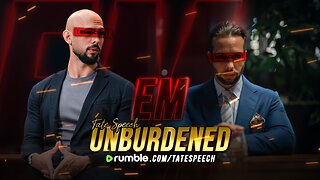 1:51:12
1:51:12
Tate Speech by Andrew Tate
11 hours agoEMERGENCY MEETING EPISODE 105 - UNBURDENED
181K96 -
 1:01:18
1:01:18
Tactical Advisor
14 hours agoBuilding a 308 AR10 Live! | Vault Room Live Stream 016
154K12 -
 2:17:02
2:17:02
Tundra Tactical
1 day ago $27.76 earnedTundra Nation Live : Shawn Of S2 Armament Joins The Boys
261K28 -
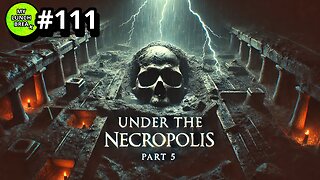 23:22
23:22
MYLUNCHBREAK CHANNEL PAGE
2 days agoUnder The Necropolis - Pt 5
202K67 -
 54:05
54:05
TheGetCanceledPodcast
1 day ago $14.69 earnedThe GCP Ep.11 | Smack White Talks Smack DVD Vs WorldStar, Battle Rap, Universal Hood Pass & More...
199K35 -
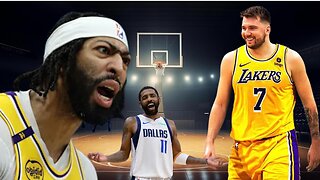 8:30
8:30
Game On!
18 hours ago $0.78 earnedLakers BLOCKBUSTER trade! Luka Doncic is coming to LA!
28.3K4 -
 48:29
48:29
hickok45
22 hours agoSunday Shoot-a-Round # 266
26.7K10 -
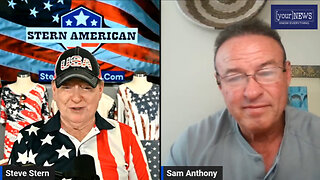 15:18
15:18
SternAmerican
3 days agoStern American with Sam Anthony from YourNews.com
20K1 -
 1:03:13
1:03:13
PMG
1 day ago $1.77 earnedRFK, Tulsi & Kash Hearings, the Plane Crash in the Potomic, & Ozempic
17K1 -
 11:33
11:33
DeVory Darkins
1 day ago $23.41 earnedJustin Trudeau PANICS after Trump slaps Canada with AGGRESSIVE Tariffs
118K260